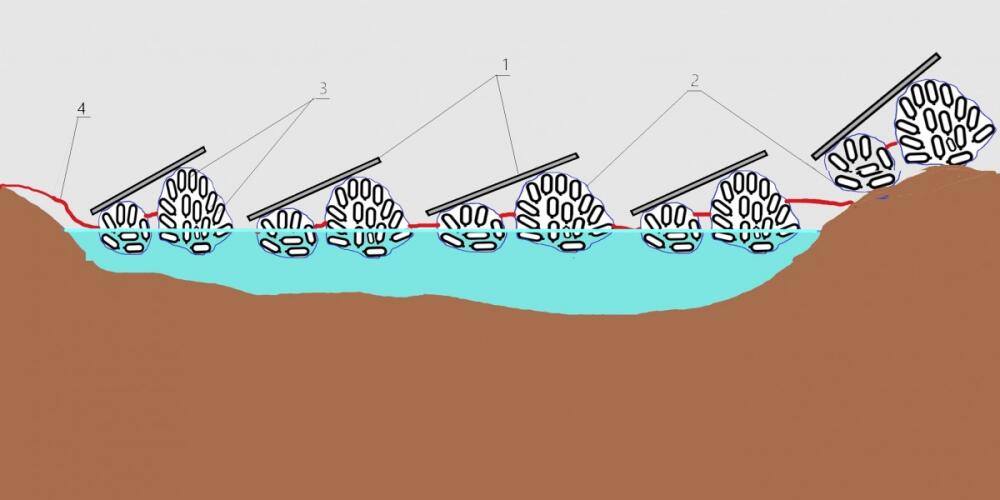
All over the world there are melioration canals that drain excess water from agricultural areas during periods of increased rainfall, or that serve to irrigate agricultural areas during the dry part of the year.
In the USA alone, melioration canals irrigate areas where 60% of vegetables and 25% of fruit and nuts are produced.
The flow through these canals is affected by aquatic vegetation, which can also interfere with canal maintenance. Higher vegetation growth can even raise the water level in the channel above the embankment height and cause the channel to fail.
Existing mechanical methods for vegetation management are expensive and labor-intensive, while chemical methods cause pollution downstream.
This duct problem could be solved very simply and economically. The surface of the channels could be used to install floating solar photo cells in the channels. Those solar cells would create a shadow under them that would reduce the arrival of sunlight in the water, which would reduce the growth of plants and algae in the water. In this way, the flow rate of the canal would increase, and the costs for maintaining the canal would decrease. It would also reduce the temperature of the water, and thus the evaporation of the water. This would also reduce the loss of water during its transport over long distances.
Making it is very simple.
Solar cells(1) could be placed on large plastic bags(2) filled with empty plastic waste bottles(3), or waste styrofoam previously used in packaging for transporting various products. All those large plastic bags (2) would be connected to each other and to the bank of the canal with strong ropes (4).
In this way, the amount of waste plastic in landfills, rivers and seas would be reduced.
In addition to all this, solar cells would produce large amounts of electricity without consuming land resources that can be used for growing food or livestock. In this way, solar cells could also be installed on many wetlands that cannot be used for agriculture, without harming the environment. When there is water on the wetland, the large plastic bags would float, and wn there is no water, the large plastic bags would lie on the ground.
Tags
Featured articles